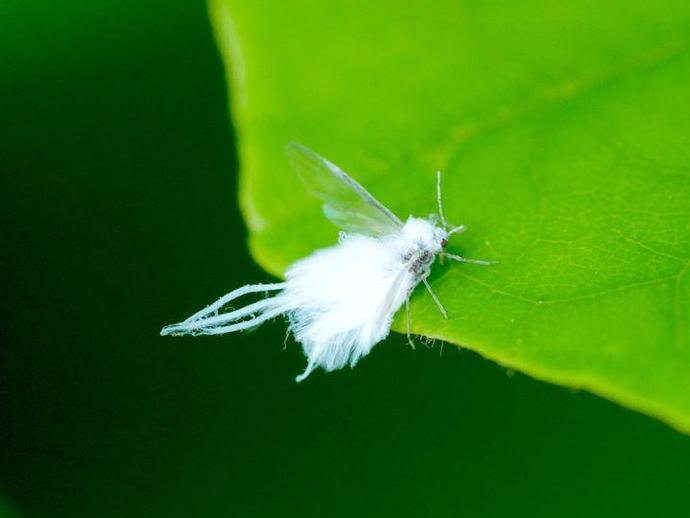June 19, 2021
We're reaching into the archives for today's #BenInNature update presented by our friends at Carter Bank & Trust! The following post was originally published on July 3, 2020.
I was sitting on my front porch the other afternoon when I saw something that looked like a tiny piece of fluff fly by. Naturally, I followed it, and I discovered that a plant in my front yard was covered in woolly aphids!
Woolly aphids belong to the subfamily Eriosomatinae, and like most aphids, they suck sap out of plant tissue. Different species of woolly aphids target different plants, and since they can cause cosmetic damage to ornamental plants, they're often considered a pest insect (fortunately, the woolly aphids in my front yard are targeting a vine that I've been unsuccessfully trying to kill for the better part of a year, so I told 'em to have at it).
The most obvious feature that separates woolly aphids from other aphids is that they produce waxy white filaments that resemble cotton! These filaments help protect the aphids from predators while having the unintentional bonus of making them look whimsical. They're also commonly referred to as "angel flies," "fairy flies," and even "poodle flies!"
ABOUT #BenInNature
Social distancing can be difficult, but it presents a great opportunity to become reacquainted with nature. In this series of posts, Administrator of Science Ben Williams ventures outdoors to record a snapshot of the unique sights that can be found in the natural world. New updates are posted Monday - Friday, with previous posts highlighted on the weekends. This series of posts is made possible thanks to the support of VMNH Corporate Partner Carter Bank & Trust (www.cbtcares.com).
NATURE PHOTO IDENTIFICATIONS
If you discover something in nature that you would like help identifying, be sure to message us right here on Facebook with a picture (please include location and date of picture) and we'll have our experts help you identify it!

 Hours & Admissions
Hours & Admissions Directions
Directions

